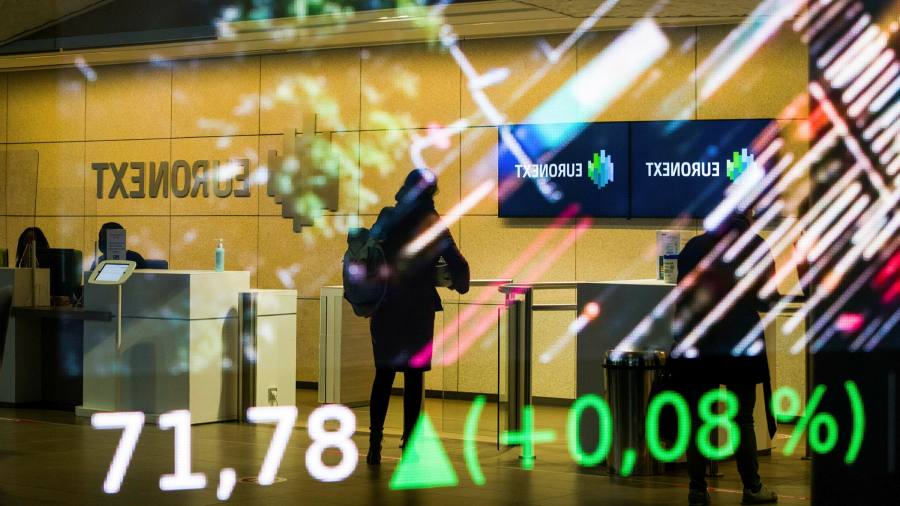European stocks have offset losses since Russia’s invasion of Ukraine last month, while major indices on both sides of the Atlantic posted their biggest weekly gains since November 2020.
The regional Stoxx Europe 600 closed up 0.9% on Friday, up 5.4% this week. The rally in recent days has helped offset losses calculated since the close of trading on Feb. 23, the day before Russian President Vladimir Putin launched a full-scale invasion of Ukraine, that have topped 10%.
In the US, the benchmark S&P 500 added 1.2%, while the high-tech Nasdaq Composite gained 2%. Over the week, both indices rose by 6.2% and 8.2%, respectively.

This week, stock markets rallied on speculation that Moscow and Kyiv are making progress on a tentative peace plan, and on Beijing’s promise to take action to stimulate China’s flagging economy. Investors also said that the reflex sell-off caused by the Russian invasion is passing and money managers are now enjoying favorable valuation in some sectors.
“We have seen panicky outflows, but now investors have changed their minds,” said Bastien Drut, chief thematic macro strategist at CPR Asset Management in Paris. “Markets are starting to trade on fundamentals again.”
Friday’s move in the stock market came after US President Joe Biden warned his Chinese counterpart Xi Jinping of retaliation if Beijing actively supported Russia in Ukraine. US Secretary of State Anthony Blinken also warned that there was no sign that Putin was “ready to stop” Russia’s invasion of the neighboring country.
“The actions that Russia is taking every single day, practically every minute of every day, are completely at odds with any serious diplomatic effort to end the war,” he said on Thursday.
Analysts at Bank of America said Friday that after investors pulled $20 billion out of global equity funds in the previous two weeks, the outflow rate this week was “much lower.”
Up to $230 billion is also expected to move from bonds to equities in the coming weeks as large investors, including US pension funds, rebuild positions in the stock market in an attempt to maintain their long-term asset allocation strategies.
But the delicacy of the situation in Ukraine continues to make some investors feel insecure.
“The only thing we can look forward to is continued volatility,” said Mary Nicola, multi-asset portfolio manager at PineBridge Investments.
“Comments from China supported the market. The situation around Ukraine and Russia remains very unstable, and this continues to be the main brake on market sentiment,” she added.
The benchmark 10-year Treasury yield, which rises when prices fall, fell 0.03 percentage points to 2.14%.
recommended

In Asia, Hong Kong’s underlying Hang Seng shed 0.4%, while the CSI 300 index of Shanghai and Shenzhen stocks added 0.7%, recovering from a strong drop earlier in the session.
Brent crude, the international oil benchmark, rose 1.2% on Friday to $107.93 a barrel.
Both Brent and benchmark U.S. oil closed up more than 8% on Thursday after the International Energy Agency warned that a drop in Russian oil supplies to the global market could be “the biggest supply crisis in decades.”
Spot gold fell more than 1 percent to $1,921 a troy ounce.

